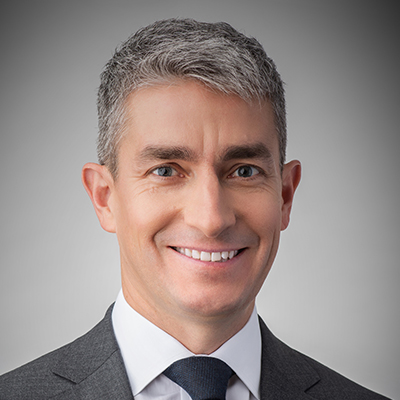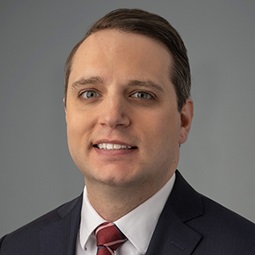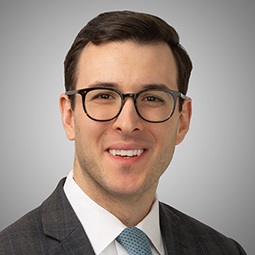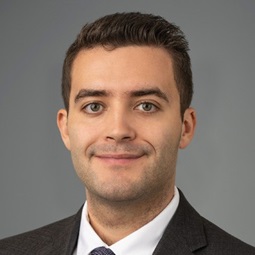Contributed by Abigail Lerner
As the adage goes, everything old is new again. Just like old fads coming back into style, bankruptcy issues that first arose decades ago seem to present themselves again and again over the years, albeit with a different set of facts. Such is the case with the bankruptcy of Johns-Manville Corporation and its affiliates. Despite Manville’s emergence from bankruptcy in 1988, questions regarding the protections of the channeling injunction issued under Manville’s chapter 11 plan continue to present themselves today. Much to the relief of one of Manville’s insurers, in a recent decision of the Bankruptcy Court for the Southern District of New York, the bankruptcy court refused to adopt the argument that a claim must be “inextricably intertwined” with the insurer’s and Manville’s insurance relationship to fall within the protections of the injunction.
Manville and the Road to the Channeling Injunction
Manville’s Asbestos Liability and its Chapter 11 Cases
Manville operated a large and diversified mining, manufacturing, and forest products business and was the world’s largest miner of raw asbestos and a major manufacturer of finished asbestos products. In the 1960s and 70s, when it became known that exposure to asbestos fibers was linked to various respiratory conditions, Manville became the target of products liability lawsuits alleging personal injuries due to asbestos exposure. By the early 1980s, Manville had been named as a defendant in more than 12,000 such suits, with new suits being filed at a rate of 400 every month. Additionally, Manville was battling its insurance carriers, which were disputing their obligation to defend and indemnify Manville against asbestos claims.
Faced with potential impending asbestos liabilities, Manville filed for chapter 11 in August 1982 in the bankruptcy court for the Southern District of New York. The filing was not based on a present inability to meet debts but rather the anticipation of massive personal injury liability in the future. Following the commencement of Manville’s bankruptcy case, and recognizing that Manville’s insurance policies were some of the estate’s most valuable assets, the bankruptcy court entered an order extending the automatic stay to any proceeding against Manville’s insurers based on the alleged liability of Manville or its affiliates, officers, directors, or employees. By prohibiting actions against the insurers, the bankruptcy court sought to insure uniform treatment of all asbestos-related health claims.
Due to the long latency period associated with asbestos-related diseases, the bankruptcy court appointed a legal representative for the interests of so-called “future asbestos claimants” ¾ those persons or entities who came into contact with asbestos or asbestos-containing products prior to Manville’s chapter 11 case but who had not yet manifested any symptoms of injuries.
After years of negotiation among Manville, its insurers, lawyers for asbestos claimants, and the future claimants’ representative, the parties reached a global settlement memorialized in Manville’s Second Amended and Restated Plan of Reorganization. The Manville plan was predicated on a court-issued injunction that barred asbestos claimants from asserting claims against the reorganized company and “channeled” such claims instead to a trust funded by Manville and its insurers. Manville’s insurers agreed to settle their coverage disputes with Manville by contributing $770 million in cash to the trust. In exchange for those payments, the insurers were relieved of all obligations related to their insurance of Manville, and the insurers would be protected from claims based on such obligations. The confirmation order and orders approving the insurance settlements effectuated the plan and channeled all present and future asbestos health claims to the trust and released Manville and its insurers from further liability for those claims.
The Channeling Injunction and Section 524(g) of the Bankruptcy Code
At the time Manville’s plan was confirmed, the Bankruptcy Code did not contain any mechanism to deal with its future asbestos claimants. In 1994, Congress added section 524(g), which codifies the procedures for obtaining a channeling injunction in asbestos cases, and section 524(h), which ratified existing injunctions such as Manville’s. One impetus behind the 1994 legislation was to convince the market that the Manville injunction could not be lifted. Notably, statements in the legislative history repeatedly emphasize section 524(g) does not grant bankruptcy courts authority that they did not already possess; it merely codifies their pre-existing power to issue injunctions against future claims, such as the one in Manville.
The Scope of the Channeling Injunction as to Non-Debtors
As we noted back in our June 2011 blog post, few cases have had to interpret and apply the scope of the protection afforded by section 524(g) to third parties. For example, in our June 15, 2011 blog post, we described how in Combustion Engineering the Third Circuit held that section 524(g) may not be used to protect a non-debtor (including affiliates of the debtor) from claims that have no relationship to the debtor’s activities. Additionally, in our April 25, 2012 blog post, we described how in Quigley the Second Circuit held that 524(g) protection could be afforded to a non-debtor where the non-debtor only could be liable as a result of the legal nature of its relationship with the debtor (e.g., a parent entity could be protected against veil piercing claims, and an insurer might be protected against “direct action” liability).
In the most recent issue presented in the Manville case, Salvador Parra, Jr. instituted an action against Marsh USA, Inc., one of Manville’s former insurers, seeking recovery against Marsh on account of asbestos personal injury claims. Similar to the cases described above, the bankruptcy court was confronted with having to define the scope of the Manville channeling injunction and whether the types of claims asserted by Parra were enjoined.
Parra’s Claims Against Marsh and the Travelers Litigation
Parra’s Claims
In February 2010, Parra filed an amended complaint against Marsh, among others, in which he asserted that he had developed asbestosis and other conditions after he was exposed to asbestos while working as an insulator during the 1960s and 1970s. Parra alleged that Marsh aided and abetted and conspired with others to conceal the health hazards inherent in asbestos-containing products from the public. According to Parra, Marsh not only functioned as an insurance broker for Manville, but it served as Manville’s insurance department and, thus, had a “unique” relationship with Manville. Parra further alleged that Marsh learned information about the health hazards of asbestos exposure from its dealings with Manville.
In response to the complaint, Marsh filed a motion with the bankruptcy court asking for a determination that Parra’s claims against Marsh were barred by the Manville channeling injunction. Parra, in turn, argued that his claims did not fall within the scope of the channeling injunction and that, even if they were, Parra did not receive constitutionally sufficient notice of the proceedings because the future claimants’ representative did not represent him with respect to his claims against the settling insurers for their independent misconduct.
The Travelers Litigation
The bankruptcy court held Marsh’s motion in abeyance pending resolution of a similar motion to enforce the Manville channeling injunction filed by Travelers Indemnity Company and Travelers Casualty and Surety Company, which had been Manville’s primary insurer. Travelers filed its motion to enforce in response to numerous state court actions in which personal injury asbestos claimants sought to recover directly from Travelers rather than through the Manville trust. Following mediation, Travelers settled the actions by agreeing to pay $445 million to various settlement funds in exchange for dismissal of the actions. The agreements were conditioned, however, upon the entry of a bankruptcy court order clarifying that, notwithstanding the settlements, the direct actions against Travelers were and had always been barred by the channeling injunction. The bankruptcy court entered the clarifying order and, after layers of appeal by non-settling insurers, the clarifying order reached the U.S. Supreme Court. The Supreme Court affirmed and agreed that the Manville channeling injunction had always barred direct claims against Travelers. The Supreme Court, however, did not decide the issue of whether the parties objecting to the settlement received constitutionally sufficient notice of the Manville chapter 11 plan. On remand, the Second Circuit held that at least one objecting party was not bound by the orders because it had not received constitutionally sufficient notice. Following additional litigation, the bankruptcy court ordered Travelers to fulfill its obligations under the settlement agreements.
Following the Travelers decision, the bankruptcy court turned its attention to Marsh’s motion.
The Bankruptcy Court’s Decision With Respect to Parra’s Claims
The Manville Channeling Injunction
The core dispute presented to the bankruptcy court was whether the claims in Parra’s complaint were barred by the Manville channeling injunction. Marsh contended that any asbestos claim that was in any way related to its insurance relationship with Manville was barred by the channeling injunction. Parra, on the other hand, argued that only those claims that are “inextricably intertwined” with Marsh’s insurance coverage of Manville were enjoined.
The bankruptcy court found that the language describing the types of claims against Marsh that parties were enjoined from asserting was broad and that those claims included those that, among other things, “relat[ed] to” services performed by Marsh for Manville. The court noted that the Supreme Court interpreted substantially identical language as it applied to Travelers and had held that the phrase “in relation to” is expansive. Further, like the language that applied to Travelers, the injunctive provisions relating to Marsh applied not only to “claims” but even to “allegations,” which, the court recognized, was not remotely amenable to a narrow construction. For these reasons, the bankruptcy court rejected Parra’s argument that the claims must be “inextricably intertwined” with the Marsh/Manville insurance relationship to fall within the scope of the injunction. Further, the bankruptcy court found that Parra’s allegations about the ways in which Marsh learned information about the health hazards of asbestos exposure from its relationship with Manville established that such claims “related to” the Marsh/Manville insurance relationship.
Alleged Violation of Due Process
Parra further alleged that the future claimants’ representative only represented his interests with respect to claims against Manville, and not claims against the settling insurers for their own misconduct. The bankruptcy court also rejected this argument, stating that nothing in the order appointing the future claimants’ representative limited the scope of his representation solely to claims against Manville.
Amending the Complaint to “Plead Around” the Channeling Injunction
In what appeared to be one final attempt to revive Parra’s claims against Marsh, Parra’s counsel indicated that his client would be willing to excise any references to Manville in his complaint to “plead around” the channeling injunction. Although the bankruptcy court concluded that it could not issue an advisory opinion on whether a complaint against Marsh devoid of references to Manville would fall within the scope of the channeling injunction, the court did warn the parties that it was not without the means to ensure compliance with the channeling injunction and that further violations of the orders could result in a finding of contempt and the imposition of sanctions on parties and their attorneys.
Conclusion
Although the concept of the channeling injunction is far from new, the Parra/Marsh dispute demonstrates that issues surrounding the enforceability of 524(g) injunctions and their predecessors remain. The Parra/Marsh dispute is a good reminder that counsel to parties facing potential asbestos liability should, in the context of a chapter 11 plan that includes a channeling injunction, be ever mindful of the language of the injunctive provisions to ensure that they obtain the broadest protection possible as it was the broad language included in the 1986 Manville orders that ultimately protected Marsh from liability associated with the claims asserted by Parra. Further still, while creative plaintiffs’ lawyers may try to “plead around” these injunctive provisions, the bankruptcy court’s reminder of its powers to hold parties in contempt should serve as a warning that any an attempt to violate such provisions could come at a high price. Only time will tell whether litigation surrounding the Manville case and its channeling injunction will continue to persist notwithstanding Manville’s emergence from bankruptcy more than two decades ago.
Printed from
Weil Restructuring Blog

|
|
|
SDNY Bankruptcy Court Says Claims Against Insurer Need Not Be “Inextricably Intertwined” with Insurer’s Relationship with Debtor to Fall Within Scope of Channeling Injunction
Copyright © 2024 Weil, Gotshal & Manges LLP, All Rights Reserved. The contents of this website may contain attorney advertising under the laws of various states. Prior results do not guarantee a similar outcome. Weil, Gotshal & Manges LLP is headquartered in New York and has office locations in Boston, Brussels, Dallas, Frankfurt, Hong Kong, Houston, London, Los Angeles, Miami, Munich, New York, Paris, Silicon Valley and Washington, D.C.
|













